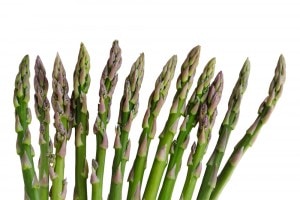
7 Ideas Content Marketers Pinched from Chicago Gardeners

Spring came early this year. It’s a great time for content marketers to learn good habits from gardeners.
As a gardener, the work we do in the spring pays off for the rest of the year. Here’s what gardening reminds us about content marketing.
Scrutinize every inch. Once a year, take a hard look at every square inch of ground.
Examine all the content you offer today, in light of your metrics and analytics. Turn over every rock to see what’s going on underneath.
Which content do you want to keep and nurture into the future? Which do you need to clear out, like weeds?
Reposition content into more favorable locations. Arrange your content to make the path to purchase easier for buyers to follow, based on your buyer personas.
Enrich the soil to strengthen everything. In spring, gardeners take global actions, such as adding compost to enrich the soil.
Which global actions will you take to improve all of your content this year?
Start where you are. For example, this year you could focus on making all existing content mobile-responsive. Or adding video versions of your content to YouTube and your website.
You might focus on making all of your content easier to read, thereby reaching a wider global audience.
Or you could edit existing content to make sure that it all speaks in one consistent brand voice. If you haven’t defined your brand voice yet, spring is a great time to start.
Divide perennial content. Successful perennials sprawl in the garden, taking over lots of ground. Perennial content may do the same thing on your website.
Divide up the largest pieces of content into a series of smaller pieces, spread them around and give them room to grow. One white paper can blossom into many blogs and Tweets.
If you’ve got too much of a good thing, share with friends. Most of my raspberries came from a friend who didn’t want them anymore – while I never been able to grow enough raspberries.
Which content could you divide up and share as guest posts on others’ websites and on social media?
Balance the types of content you cultivate: evergreens, perennials and annuals. In any given year, some things will work better than others.
Start with content that affects the greatest number of customers in the long run. A solid editorial calendar for content marketing will ensure a proper balance of short-lived, perennial and evergreen content.
Balance your content to diversify your risks:
- Start with long-lived content that yields results again and again. In our garden, our fruit trees and bushes play this role, bearing fresh fruit year after year.
- Add perennial content that may have a life of 2, 3, or more years. In a garden, rhubarb, chives and artichokes can produce again and again with little added effort.
- Day to day, keep content fresh with news, curated content and newsjacking. In a garden, annual vegetables play this role.
Start with the best seeds. To get healthy, vigorous plants in your garden, start with the best seeds and stock.
The best seeds are fresh and ready to flourish in your region. Make sure they’ll get the warmth and growing season they need in your area.
Once you’ve chosen the right seeds, they just need soil, sun, water and a little love.
In content marketing, start with your best ideas. Nurture them into seedlings, then care for them until they’re full-grown and ready to produce a harvest.
Make room for volunteers. As we cleared the soil, we found a few plants that unexpectedly made it through the winter or grew from seed – a strawberry, cilantro, marjoram, a couple of lettuces.
Among your content, is there room for your customers to volunteer their stories? For guest bloggers to add a spicy new angle?
Manage to the vagaries of the season. Results from content marketing and gardening vary for many reasons beyond our control.
For example, this year Chicago gardeners enjoyed warmth very early on. That warmth led to one of our cherry trees blossoming much earlier than usual.
Although the early flowers were pretty, a cold snap froze the baby fruits on our early-blooming cherry tree. There will be no fruit from that tree this year.
Luckily, our bigger, older cherry tree bloomed a couple of weeks later.
Do you have content that got to market too early? What if you tried a promising idea again, just at a later time?
Foresighted gardeners plant early and protect their early plantings by covering them at night. We did that to get an early start with our basil this year.
What steps can you take to nurture your most fragile content and protect it until it takes root?
Success in the spring depends on the work you did over the winter.
An earlier version of this post appeared May 6, 2015. That post offered only 5 ideas; since then we added 2 more.





